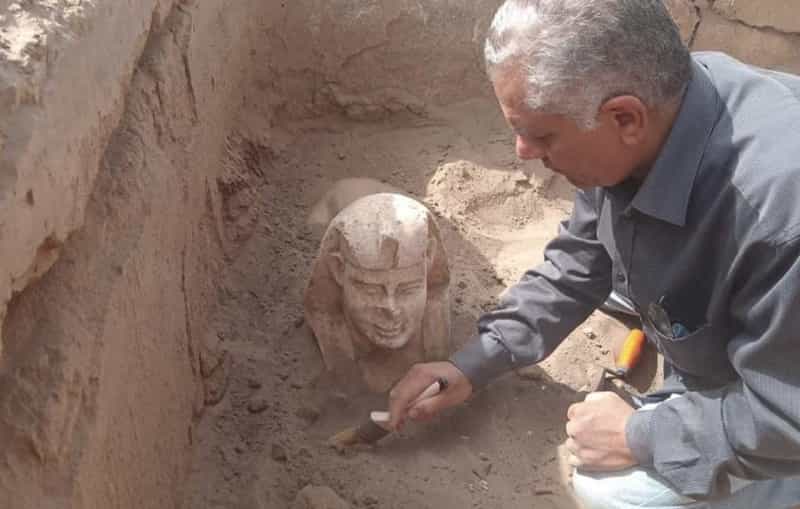An Egyptian archaeological expedition has discovered a two-thousand-year-old sphinx in the vicinity of the Dendera temple, which, according to the excavation director, is in perfect condition.
Archaeologists emphasized that the sphinx still has some of its original pigments and that the character’s features were represented quite accurately.
Located about 45 kilometers north of Luxor, in Upper Egypt, the Dendera temple is a large ceremonial complex dedicated to Hathor, the goddess of love and fertility.
The oldest structure on the site dates from the reign of Pharaoh Nectanebo I, the first monarch of the Thirtieth Dynasty, who ruled ancient Egypt between 381 BC and 364 BC.
Dendera is currently one of the best-preserved ancient Egyptian temples, mainly because it remained buried under the sand until the French archaeologist Auguste Mariette unearthed it in the mid-19th century. Since then, numerous excavations have been carried out to uncover the place’s secrets.
Excavations in Dendera, led by Mamdouh El Damaty, a former Minister of Antiquities and Professor of Archaeology at Ain Shams University in Cairo, have unearthed a sphinx that researchers believe could represent the Roman emperor Claudius.
According to the Egyptian Ministry of Tourism and Antiquities, the sphinx was carved from limestone and was discovered inside a Roman structure made of limestone and mortar. “The remains of the structure consist of a platform on two levels and with sloping floors, inside which a Byzantine-era water storage tank was found,” El Damaty explained.
One “Magnificent” Sphinx
The sphinx, which is practically intact, retains part of its original pigmentation and wears a nemes, a ceremonial handkerchief with a cobra (ureo) encircling its forehead, a symbol of royalty in ancient Egypt. “Initial examination of the face indicates that it is likely the Emperor Claudius,” El Damaty said.
The archaeologist himself has described the sphinx as “magnificent” since the face outlines “a smile on the edges of his mouth” and presents “a dimple on each side and traces of red and yellow pigments.”
Egypt was then under Roman rule, and the emperors were the country’s rulers. Claudius (AD 41-54), as Pharaoh, adopted the title “Tiberius Claudius, emperor and ruler of rulers, beloved of Isis and Ptah, the mighty bull of the Moon stable on the horizon.”









